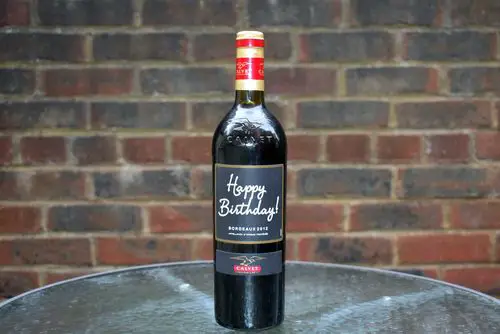You’d be surprised how many of my customers ask for wines that are not above 13%. I can well understand why as higher alcohol wines tend to fight with food. A wine with lower alcohol levels tastes fruitier and it brings out the flavours of many a dish. What’s more you can enjoy more than a glass without feeling heady.
I find that drinking high alcohol wines is like drinking spirits: they numb the mouth and close the taste buds down – would you drink scotch with your roast sirloin of beef?
In years past it was common to have wines are 12% but warmer seasons, changing styles and better wine making techniques have led to the rise of alcohol levels. Red wines in particular seem to be difficult to find under 13%.
Sun is the real culprit to producing higher alcohol levels in wine. This can be demonstrated in many 2009 and 2010 vintages from Bordeaux. Hotter climates produce grapes with higher sugar levels and it is the sugar contained within the grapes that dictates the level of alcohol. Therefore during the growing season should the vines be exposed to excessive heat you can be certain the wine will be of a higher alcoholic level.
New World wines from Australia, Chile, Argentina etc invariably will have higher levels of alcohol compared with those of most European (Old World) Wines, some as high as 15% plus, as they have hotter growing climates which may be a contributing factor to those who are prone from headaches with red wine.
A result of global warming could well be that the levels of alcohol in European wines are on the increase but I will always continue to seek wines of an ABV (Alcohol By Volume) percentage no greater than 13.5%. I have a few recommendations for you if lower alcohol reds are your preferred tipple.
Brissonet Rouge 11.5%. £3.57. This is a soft, fresh and powerfully aromatic red bursting with ripe flavours of ripe cherries, violets, dark chocolate and blackberries. This really is a must for your more tomato based dishes as it is super with barbecued meats as well as pizzas, pastas, as well as barbequed meats, cheeses and Indian, Thai and Chinese meals.
Chateau Millet Lartigue 2008 12%. £7.80. A fruity, soft, well balanced, easy drinking wine with notes of black cherries, blackcurrants, vanilla, dried herbs and cedar. It will pair well with duck, game, goose, pork and beef, Asian cuisine – especially dishes prepared with soy, black bean and oyster sauce.
Le Roc du Chateau Pellebouc 2006 12.5%. £9.01. A gold medal winner from the Thienpont family with the flavour of red currants, raspberries, blackberries, candied fruits and spice. In the mouth, it is quite powerful in terms of both roundness and balance. Le Roc du Château Pellebouc will accompany both beef and lamb as well as pork and chicken and is really great with rich casseroles and spicy curries.
Chateau Chadeuil 2008 12.5%. £7.34. A cracking merlot based claret, dark ruby in colour with flavours of black cherry, mocha, spice, plum, blackberries and a hint of vanilla. It is a medium bodied, supple wine with very well balanced tannins and a long smooth finish. This is a wine that has been produced with good food in mind.
Good on it’s own but really blossoms when drunk with Rump Steak, Game, Roast Beef, Stuffed Aubergines/Peppers and Strong Cheeses.
Chateau Graves de Barrau 2008 12.5%. £8.64. A traditional claret with flavours of blackberries, blackcurrants, vanilla with a touch of gravelly earthiness. I recommend you decant and let breathe for a good while whilst bringing up to room temperature. Graves de Barrau is an excellent accompaniment with Sirloin Steak, Chilli Con Carne, Spaghetti Bolognese, Roast Lamb and Meat Based Pasta.
Cuvee Jean Baptiste Audy 12.5%. £5.99. Cuvée is made from a blend of Merlot, Cabernet Sauvignon and Syrah and has intense aromas with oodles of fruit and notes of blackberry jam, ripe dark plums and black pepper with a hint of smoke. Cuvée will accompany tomato based pastas and pizzas, richly flavoured casseroles, game and grilled meats.
Happy drinking!

